Huguenot rebellions on:
[Wikipedia]
[Google]
[Amazon]
 The Huguenot rebellions, sometimes called the Rohan Wars after the
The Huguenot rebellions, sometimes called the Rohan Wars after the

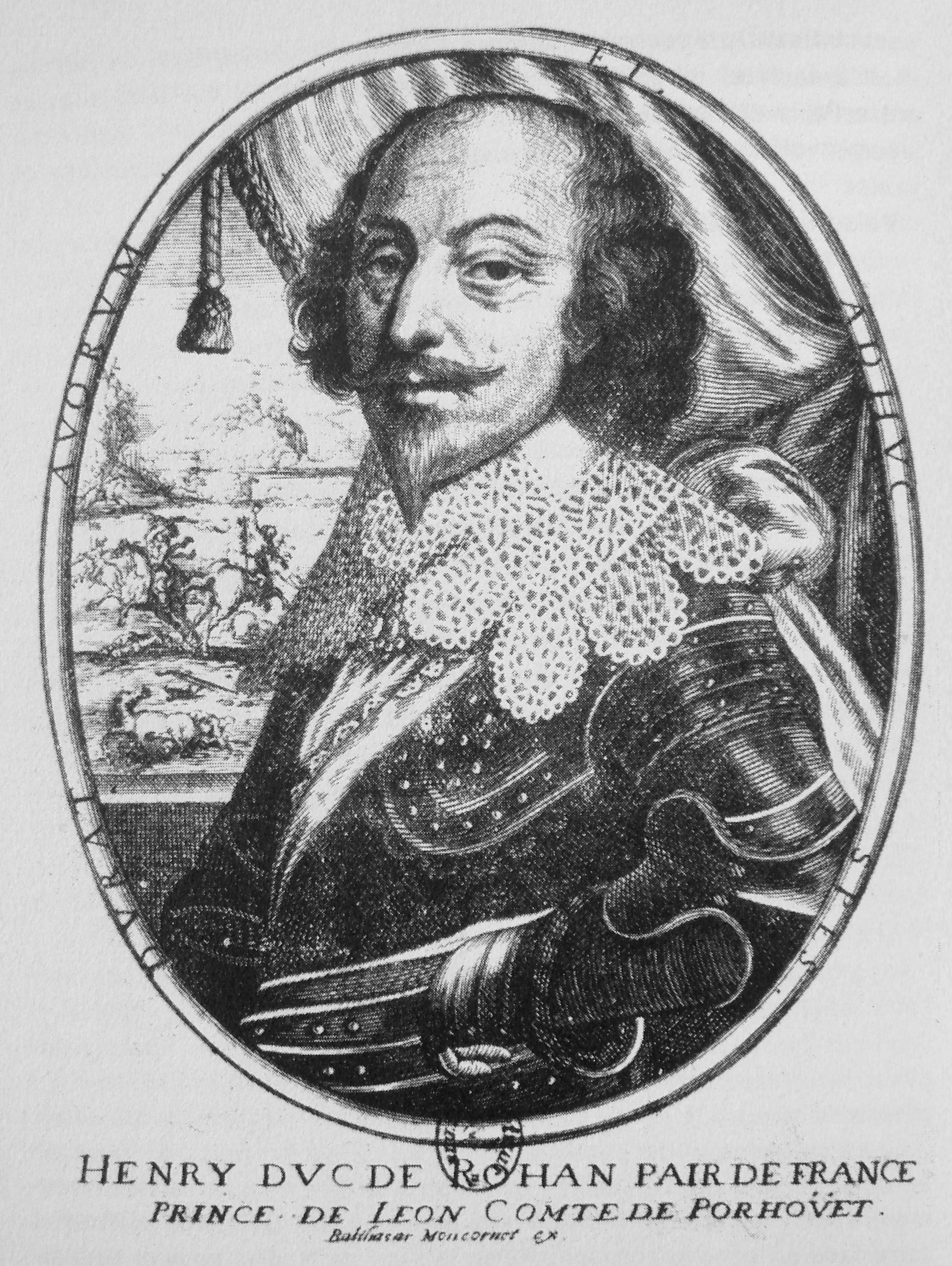

 The first Huguenot rebellion was triggered by the re-establishment of Catholic rights in Huguenot Béarn by
The first Huguenot rebellion was triggered by the re-establishment of Catholic rights in Huguenot Béarn by
David J. Sturdy, p. 125. Feeling their survival was at stake, the Huguenots gathered in La Rochelle on 25 December. At this Huguenot General Assembly in La Rochelle the decision was taken to forcefully resist the Royal threat, and to establish a "state within the state", with an independent military commandment and independent taxes, under the direction of the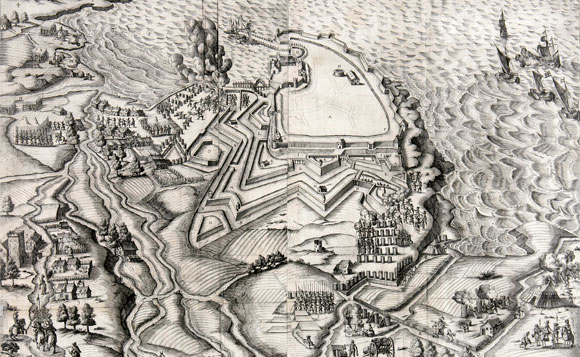
 In 1621, Louis XIII moved to eradicate what he considered an open rebellion against his power. He led an army to the south, first succeeding in capturing the Huguenot city of
In 1621, Louis XIII moved to eradicate what he considered an open rebellion against his power. He led an army to the south, first succeeding in capturing the Huguenot city of
by Christopher Duffy, p.118 A small number of troops attempted to surround
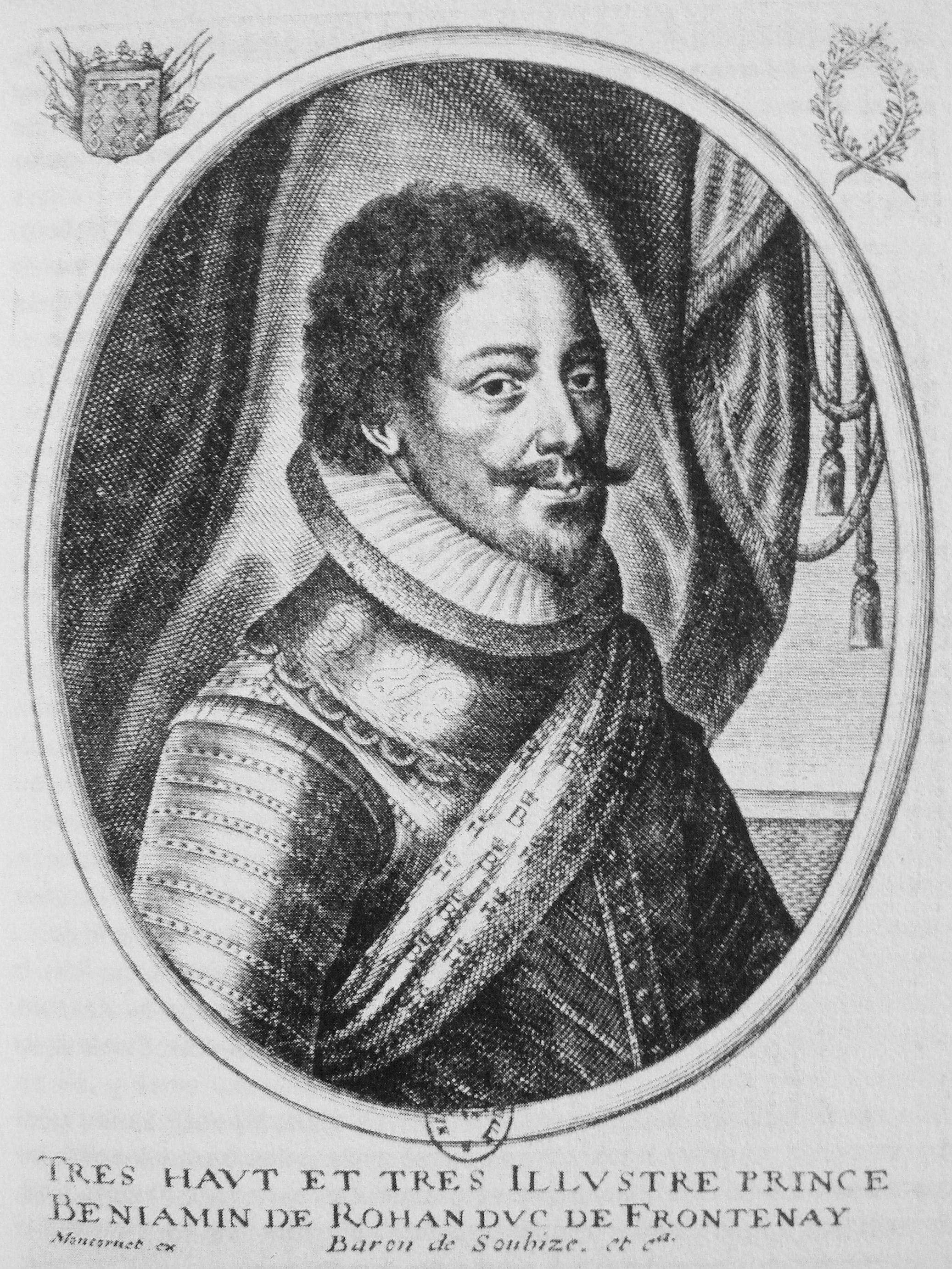
 Louis XIII did not, however, uphold the terms of the Treaty of Montpellier,''The history of France''
Louis XIII did not, however, uphold the terms of the Treaty of Montpellier,''The history of France''
Eyre Evans Crowe, p.454 sparking renewed Huguenot resentment.
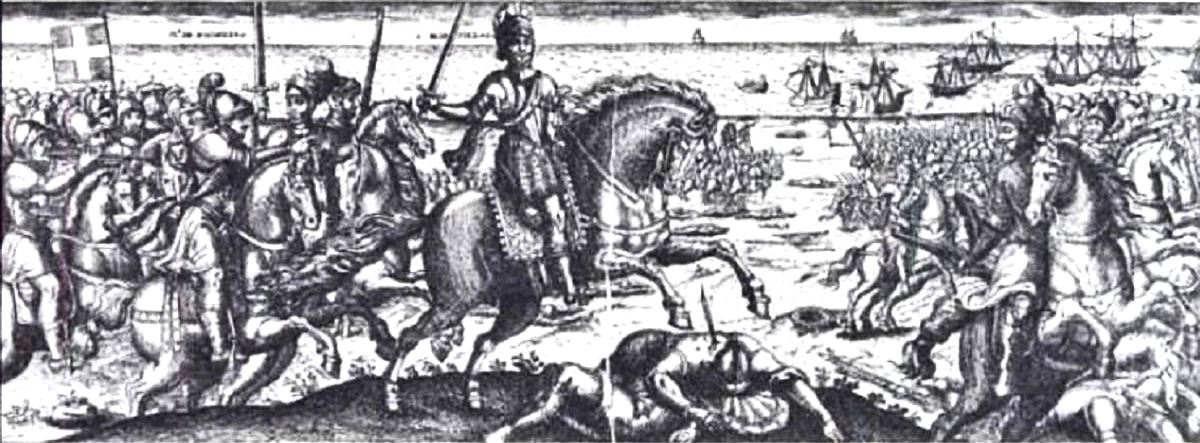
 The third and last Huguenot rebellion started with an English military intervention aimed at encouraging an upheaval against the French king. The rebels had received the backing of the English king
The third and last Huguenot rebellion started with an English military intervention aimed at encouraging an upheaval against the French king. The rebels had received the backing of the English king ''Dictionary of Battles and Sieges''
Tony Jaques, p.572 Cardinal Richelieu acted as the commander of the besieging troops (during those times when the King was absent). Residents of La Rochelle resisted for 14 months, under the leadership of the mayor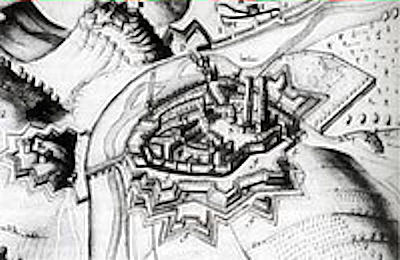 Rohan continued to resist in Southern France, where the forces of Louis XIII continued to intervene in 1629. In the siege of Privas, the inhabitants were massacred or expelled, and the city was burnt to the ground. Louis XIII finally captures Alès, in the
Rohan continued to resist in Southern France, where the forces of Louis XIII continued to intervene in 1629. In the siege of Privas, the inhabitants were massacred or expelled, and the city was burnt to the ground. Louis XIII finally captures Alès, in the
Huguenot
The Huguenots ( , also , ) were a religious group of French Protestants who held to the Reformed, or Calvinist, tradition of Protestantism. The term, which may be derived from the name of a Swiss political leader, the Genevan burgomaster Be ...
leader Henri de Rohan, were a series of rebellions of the 1620s in which French
French (french: français(e), link=no) may refer to:
* Something of, from, or related to France
** French language, which originated in France, and its various dialects and accents
** French people, a nation and ethnic group identified with Franc ...
Calvinist
Calvinism (also called the Reformed Tradition, Reformed Protestantism, Reformed Christianity, or simply Reformed) is a major branch of Protestantism that follows the theological tradition and forms of Christian practice set down by John C ...
Protestant
Protestantism is a Christian denomination, branch of Christianity that follows the theological tenets of the Reformation, Protestant Reformation, a movement that began seeking to reform the Catholic Church from within in the 16th century agai ...
s (Huguenots), mainly located in southwestern France, revolted against royal authority. The uprising occurred a decade after the death of Henry IV who, himself originally a Huguenot before converting to Catholicism
The Catholic Church, also known as the Roman Catholic Church, is the largest Christian church, with 1.3 billion baptized Catholics worldwide . It is among the world's oldest and largest international institutions, and has played a ...
, had protected Protestants through the Edict of Nantes
The Edict of Nantes () was signed in April 1598 by King Henry IV and granted the Calvinist Protestants of France, also known as Huguenots, substantial rights in the nation, which was in essence completely Catholic. In the edict, Henry aimed pr ...
. His successor Louis XIII
Louis XIII (; sometimes called the Just; 27 September 1601 – 14 May 1643) was King of France from 1610 until his death in 1643 and King of Navarre (as Louis II) from 1610 to 1620, when the crown of Navarre was merged with the French crow ...
, under the regency of his Italian Catholic mother Marie de' Medici, became more intolerant of Protestantism. The Huguenots tried to respond by defending themselves, establishing independent political and military structures, establishing diplomatic contacts with foreign powers, and openly revolting against central power. The Huguenot rebellions came after two decades of internal peace under Henry IV, following the intermittent French Wars of Religion
The French Wars of Religion is the term which is used in reference to a period of civil war between French Catholics and Protestants, commonly called Huguenots, which lasted from 1562 to 1598. According to estimates, between two and four mil ...
of 1562–1598.
First Huguenot rebellion (1620–1622)



 The first Huguenot rebellion was triggered by the re-establishment of Catholic rights in Huguenot Béarn by
The first Huguenot rebellion was triggered by the re-establishment of Catholic rights in Huguenot Béarn by Louis XIII
Louis XIII (; sometimes called the Just; 27 September 1601 – 14 May 1643) was King of France from 1610 until his death in 1643 and King of Navarre (as Louis II) from 1610 to 1620, when the crown of Navarre was merged with the French crow ...
in 1617, and the military annexation of Béarn to France in 1620, with the occupation of Pau in October 1620. The government was replaced by a French-style parliament in which only Catholics could sit.''Fractured Europe, 1600–1721''David J. Sturdy, p. 125. Feeling their survival was at stake, the Huguenots gathered in La Rochelle on 25 December. At this Huguenot General Assembly in La Rochelle the decision was taken to forcefully resist the Royal threat, and to establish a "state within the state", with an independent military commandment and independent taxes, under the direction of the
Duc de Rohan Duke of Rohan is a title of French nobility, associated with the Breton region of Rohan.
Duke of Rohan House of Rohan
House of Chabot
House of Rohan-Chabot
''The title ''prince de Léon'' is used a courtesy title until the succession of th ...
, an ardent proponent of open conflict with the King. In that period, the Huguenots were very defiant of the Crown, displaying intentions to become independent on the model of the Dutch Republic
The United Provinces of the Netherlands, also known as the (Seven) United Provinces, officially as the Republic of the Seven United Netherlands ( Dutch: ''Republiek der Zeven Verenigde Nederlanden''), and commonly referred to in historiograph ...
: "If the citizens, abandoned to their guidance, were threatened in their rights and creeds, they would imitate the Dutch in their resistance to Spain, and defy all the power of the monarchy to reduce them." (''Mercure de France
The was originally a French gazette and literary magazine first published in the 17th century, but after several incarnations has evolved as a publisher, and is now part of the Éditions Gallimard publishing group.
The gazette was published ...
'')

 In 1621, Louis XIII moved to eradicate what he considered an open rebellion against his power. He led an army to the south, first succeeding in capturing the Huguenot city of
In 1621, Louis XIII moved to eradicate what he considered an open rebellion against his power. He led an army to the south, first succeeding in capturing the Huguenot city of Saumur
Saumur () is a commune in the Maine-et-Loire department in western France.
The town is located between the Loire and Thouet rivers, and is surrounded by the vineyards of Saumur itself, Chinon, Bourgueil, Coteaux du Layon, etc.. Saumur s ...
, and then succeeding in the siege of Saint-Jean-d'Angély against Rohan's brother Benjamin de Rohan, duc de Soubise
Benjamin de Rohan, duc de Soubise (1580–1642), was a French Huguenot leader.
Son of René II, Viscount of Rohan, and younger brother of Henri de Rohan, he inherited the lordship of Soubise through his mother Catherine de Parthenay. He ser ...
on 24 June.''Siege Warfare''by Christopher Duffy, p.118 A small number of troops attempted to surround
La Rochelle
La Rochelle (, , ; Poitevin-Saintongeais: ''La Rochéle''; oc, La Rochèla ) is a city on the west coast of France and a seaport on the Bay of Biscay, a part of the Atlantic Ocean. It is the capital of the Charente-Maritime department. Wi ...
under the Count of Soissons in the Blockade of La Rochelle, but Louis XIII then moved south to Montauban
Montauban (, ; oc, Montalban ) is a commune in the Tarn-et-Garonne department, region of Occitania, Southern France. It is the capital of the department and lies north of Toulouse. Montauban is the most populated town in Tarn-et-Garonne, ...
, where he exhausted his troops in the Siege of Montauban.
After a lull, combat resumed with numerous atrocities in 1622, with the terrible Siege of Nègrepelisse in which all the population was massacred and the city was burnt to the ground.
In La Rochelle, the fleet of the city under Jean Guiton
Jean Guiton (2 July 1585 – 15 March 1654) was born in La Rochelle, where he followed the occupation of ship-owner. He became a notable Huguenot leader during the Naval battle of Saint-Martin-de-Ré and siege of La Rochelle.
Having been nominat ...
started to harass royal vessels and bases. The Royal fleet finally met head-to-head with the fleet of La Rochelle in the Naval battle of Saint-Martin-de-Ré
The Naval battle of Saint-Martin-de-Ré (French:''Bataille navale de Saint-Martin-de-Ré'') took place on 27 October 1622, between the Huguenot fleet of La Rochelle under Jean Guiton, and a Royal fleet under Charles de Guise.
Under Henry IV th ...
on 27 October 1622 in an inconclusive encounter.
Meanwhile, the Treaty of Montpellier was negotiated, putting an end to hostilities. The Huguenot fortresses of Montauban
Montauban (, ; oc, Montalban ) is a commune in the Tarn-et-Garonne department, region of Occitania, Southern France. It is the capital of the department and lies north of Toulouse. Montauban is the most populated town in Tarn-et-Garonne, ...
and La Rochelle could be kept, but the fortress of Montpellier
Montpellier (, , ; oc, Montpelhièr ) is a city in southern France near the Mediterranean Sea. One of the largest urban centres in the region of Occitania, Montpellier is the prefecture of the department of Hérault. In 2018, 290,053 people l ...
had to be dismantled.
The year 1624 saw the arrival of Cardinal Richelieu to power as chief minister, which would mean much harder times ahead for the Protestants.
Second Huguenot rebellion (1625-1626)

 Louis XIII did not, however, uphold the terms of the Treaty of Montpellier,''The history of France''
Louis XIII did not, however, uphold the terms of the Treaty of Montpellier,''The history of France''Eyre Evans Crowe, p.454 sparking renewed Huguenot resentment.
Toiras
Jean Caylar d'Anduze de Saint-Bonnet, Marquis de Toiras (1585–1636), often just called Toiras, was a Marshal of France of the 17th century.
Toiras fought against Soubise in the Capture of Ré island in 1625. After his victory, he received the ...
reinforced the fortification of Fort Louis, instead of dismantling it, right under the walls of the Huguenot stronghold of La Rochelle
La Rochelle (, , ; Poitevin-Saintongeais: ''La Rochéle''; oc, La Rochèla ) is a city on the west coast of France and a seaport on the Bay of Biscay, a part of the Atlantic Ocean. It is the capital of the Charente-Maritime department. Wi ...
, and as a strong fleet was being prepared in Blavet for the eventuality of a siege of the city. The threat of a future siege on the city of La Rochelle was obvious, both to Soubise and the people of La Rochelle.
In February 1625, Soubise led a second Huguenot revolt against Louis XIII, and, after publishing a manifesto, invaded and occupied the island of Ré, near La Rochelle. From there he sailed up to Brittany where he led a successful attack on the royal fleet in the Battle of Blavet, although he could not take the fort after a three weeks siege. Soubise then returned to Ré with 15 ships and soon occupied the Ile d'Oléron
Ile may refer to:
* iLe, a Puerto Rican singer
* Ile District (disambiguation), multiple places
* Ilé-Ifẹ̀, an ancient Yoruba city in south-western Nigeria
* Interlingue (ISO 639:ile), a planned language
* Isoleucine, an amino acid
* Another ...
as well, thus giving him command of the Atlantic coast from Nantes
Nantes (, , ; Gallo: or ; ) is a city in Loire-Atlantique on the Loire, from the Atlantic coast. The city is the sixth largest in France, with a population of 314,138 in Nantes proper and a metropolitan area of nearly 1 million inhabita ...
to Bordeaux
Bordeaux ( , ; Gascon oc, Bordèu ; eu, Bordele; it, Bordò; es, Burdeos) is a port city on the river Garonne in the Gironde department, Southwestern France. It is the capital of the Nouvelle-Aquitaine region, as well as the prefectu ...
. Through these deeds, he was recognized as the head of the Huguenots, and named himself "Admiral of the Protestant Church". The French Navy on the contrary was now completely depleted, leaving the central government very vulnerable.
The Huguenot city of La Rochelle voted to join Soubise on 8 August. These events would end with the defeat of the fleets of La Rochelle and Soubise, and the full Capture of Ré island
Capture may refer to:
*Asteroid capture, a phenomenon in which an asteroid enters a stable orbit around another body
*Capture, a software for lighting design, documentation and visualisation
*"Capture" a song by Simon Townshend
*Capture (band), an ...
by September.
After long negotiations, a peace agreement, the Treaty of Paris, was finally signed between the city of La Rochelle and King Louis XIII on 5 February 1626, preserving religious freedom but imposing some guaranties against possible future upheavals: in particular, La Rochelle was prohibited from keeping a naval fleet.
Third Huguenot rebellion (1627–29)

 The third and last Huguenot rebellion started with an English military intervention aimed at encouraging an upheaval against the French king. The rebels had received the backing of the English king
The third and last Huguenot rebellion started with an English military intervention aimed at encouraging an upheaval against the French king. The rebels had received the backing of the English king Charles I Charles I may refer to:
Kings and emperors
* Charlemagne (742–814), numbered Charles I in the lists of Holy Roman Emperors and French kings
* Charles I of Anjou (1226–1285), also king of Albania, Jerusalem, Naples and Sicily
* Charles I of ...
, who sent his favourite George Villiers, 1st Duke of Buckingham
George Villiers, 1st Duke of Buckingham, 28 August 1592 – 23 August 1628), was an English courtier, statesman, and patron of the arts. He was a favourite and possibly also a lover of King James I of England. Buckingham remained at the ...
with a fleet of 80 ships. In June 1627 Buckingham organised a landing on the nearby island of Île de Ré with 6,000 men in order to help the Huguenots, thus starting an Anglo-French War (1627–1629), with the objective of controlling the approaches to La Rochelle, and of encouraging the rebellion in the city. Buckingham ultimately ran out of money and support, and his army was weakened by diseases. The English intervention ended with the unsuccessful siege of Saint-Martin-de-Ré (1627). After a last attack on Saint-Martin they were repulsed with heavy casualties, and left in their ships.
The English intervention was followed by the siege of La Rochelle.Tony Jaques, p.572 Cardinal Richelieu acted as the commander of the besieging troops (during those times when the King was absent). Residents of La Rochelle resisted for 14 months, under the leadership of the mayor
Jean Guiton
Jean Guiton (2 July 1585 – 15 March 1654) was born in La Rochelle, where he followed the occupation of ship-owner. He became a notable Huguenot leader during the Naval battle of Saint-Martin-de-Ré and siege of La Rochelle.
Having been nominat ...
and with gradually diminishing help from England. During the siege, the population of La Rochelle decreased from 27,000 to 5,000 due to casualties, famine, and disease. Surrender was unconditional.
 Rohan continued to resist in Southern France, where the forces of Louis XIII continued to intervene in 1629. In the siege of Privas, the inhabitants were massacred or expelled, and the city was burnt to the ground. Louis XIII finally captures Alès, in the
Rohan continued to resist in Southern France, where the forces of Louis XIII continued to intervene in 1629. In the siege of Privas, the inhabitants were massacred or expelled, and the city was burnt to the ground. Louis XIII finally captures Alès, in the siege of Alès
The siege of Alès was undertaken by Louis XIII of France, and the city captured on 17 June 1629.
The siege
The siege of Alès followed the disastrous capitulation of the main Protestant stronghold of La Rochelle, in the siege of La Rochelle. Hu ...
in June 1629, and Rohan submitted.
By the terms of the Peace of Alais, the Huguenots lost their territorial, political, and military rights, but retained the religious freedom granted by the Edict of Nantes
The Edict of Nantes () was signed in April 1598 by King Henry IV and granted the Calvinist Protestants of France, also known as Huguenots, substantial rights in the nation, which was in essence completely Catholic. In the edict, Henry aimed pr ...
. However, they were left at the mercy of the monarchy, unable to resist when the next king, Louis XIV
Louis XIV (Louis Dieudonné; 5 September 16381 September 1715), also known as Louis the Great () or the Sun King (), was List of French monarchs, King of France from 14 May 1643 until his death in 1715. His reign of 72 years and 110 days is the Li ...
, embarked on active persecution in the 1670s, and finally revoked the Edict of Nantes altogether in 1685.
Aftermath
The Huguenot rebellions were implacably suppressed by the French Crown. As a consequence, the Huguenots lost their political power, and ultimately their religious freedom in the Kingdom of France with the Revocation of the Edict of Nantes in 1685. These events were one of the factors affecting an unusually strong Absolutist central government in France, which would have a decisive influence on French history over the ensuing centuries.Notes
References
* Christopher Duffy ''Siege Warfare: The Fortress in the Early Modern World, 1494–1660'' Routledge, 1979 * Jack Alden Clarke ''Huguenot warrior: the life and times of Henri de Rohan, 1579–1638'' Springer, 1967 * Tony Jaques ''Dictionary of Battles and Sieges'' Greenwood Publishing Group, 2007 * Mack P. Holt ''The French wars of religion, 1562–1629'' Cambridge University Press, 2005 {{DEFAULTSORT:Huguenot Rebellions